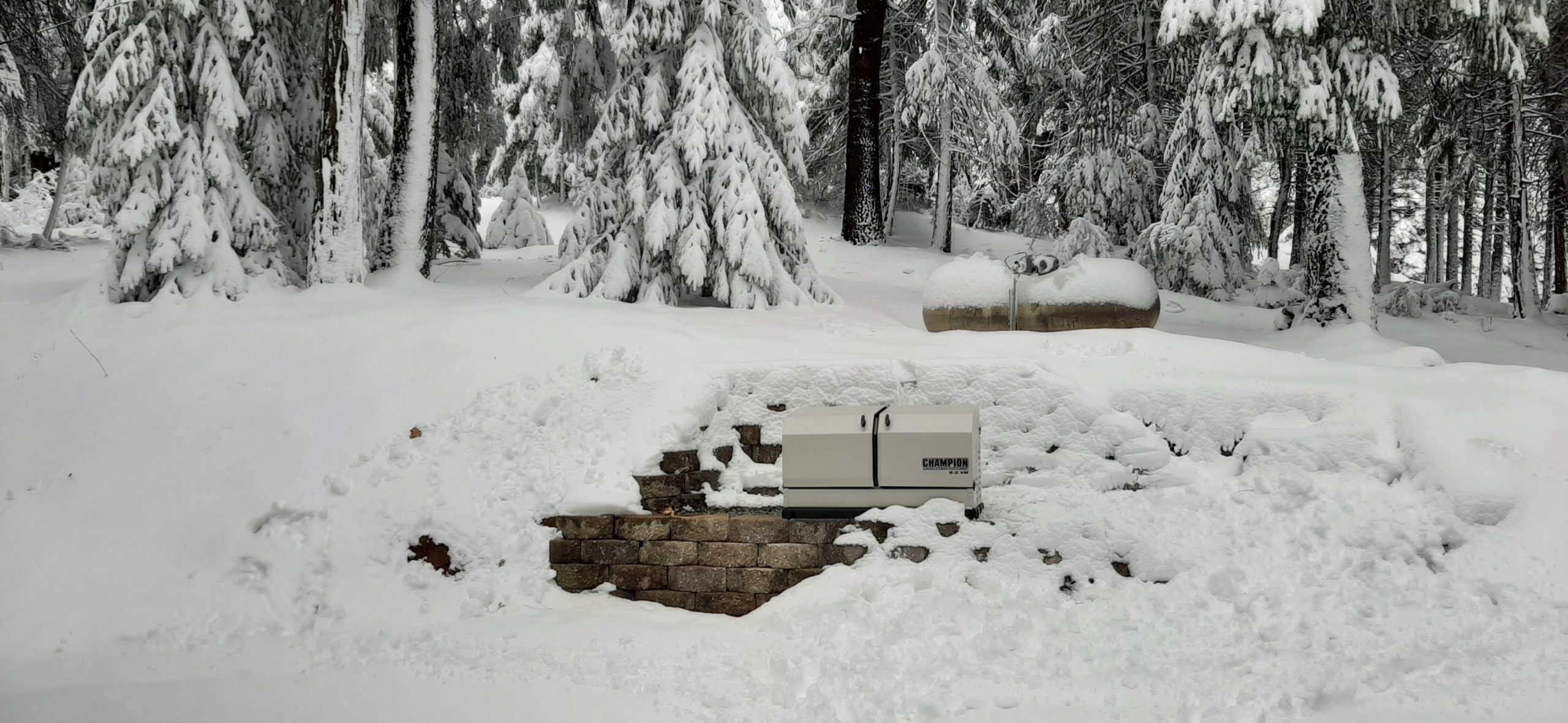Winter Storm Prep 101
Winter Storm Prep 101
A winter power outage that only lasts an hour or two is inconvenient, but when the lights go out, no one knows when they’ll come back on. For peace of mind now as cold weather sets in, prepare for winter storms ahead of time to avoid the inconvenience of a short-term outage but especially to protect your family from the dangerous results of an extended outage.

No power means no heat, and if you’re surrounded by heavy snow, blizzard conditions, and icy roads, getting out of the house might not be an option for a few days. Here are five things you can do to prepare for severe winter weather.
- Prepare an emergency kit
If you live in an area where ice storms frequently cause power outages, make sure you have a first aid kit, medications, a portable phone charger, batteries, flashlights, extra blankets, and a battery-powered radio, as well as a three-day supply of water and non-perishable food for your family and your pets. If someone in your family relies on prescription medications, keep them filled. It’s also smart to keep your gas tank full and have extra propane or gasoline on hand to fuel your portable generator. Don’t have a generator yet? Read on.
- Purchase a generator
Nothing’s more important than the health and safety of your family. When the power goes out due to a winter storm, will your family be safe and warm? If you don’t already have one, purchasing a generator you can rely on should be a top priority.
There are two main types of generators for winter storm preparation: portable generators and home standby generators.
A portable generator is great if you only want to back up a few essentials. Portable generators come in different sizes, they run on either gasoline or propane (duel fuel generators run on either), and they don’t need to be installed.
If you’d like to power more than just the essentials, or even your whole home, you may want to have a standby generator installed. Standbys never need refueling since they’re connected to your propane or natural gas system. Your home standby generator starts automatically when the power goes out and returns to standby when power is restored, ensuring warmth and safety for your family during a winter storm power outage. If you want to learn more about the difference between home standby generators and portable generators, this resource will help.
- Prepare your home
To prevent expensive damage from burst water pipes, insulate pipes in exposed areas, and when the temperature drops, let water drip from faucets served by uninsulated outdoor pipes. Keep the warmth in and the cold out by installing storm windows or insulating your windows from the inside with plastic, or pick up an insulation kit at your local hardware store. Check around your doors for air leaks and add weatherstripping where needed. Test your smoke detectors and carbon monoxide detectors to make sure they’re backed up by fresh batteries so they’ll work during an outage. Trim any tree branches that could be a danger to your home if they fell, and make sure your roof and shingles are in top condition so they can withstand heavy snow and strong winds.
- Prepare your yard
Mulch your gardens to protect plants that you don’t want to freeze. Follow recommendations from a local nursery about the best way to preserve your plants. Store or cover outdoor items that could be damaged during a winter storm. No matter how bad the weather is outside, it’s never an option to run your portable generator or inverter inside. The best way to protect your investment is with a Champion Storm Shield generator cover. The cover withstands winds up to 70 mph, snow loads up to 18 inches, and rain up to 12 inches a day so you can run your generator with confidence in severe weather.
- Purchase a snow blower
Unless your idea of fun is removing waist-high snow from your driveway with a shovel, buy a snow blower. A snow blower can help you clear your driveway after a snowstorm in record time, and it could be a lifesaver if you need to leave your home during an emergency. If you already own one, get it serviced each fall so it will be ready to go when you need it. Be sure you check your local news to see if the roads are clear so you don’t put yourself or others at risk by venturing out when it’s not safe.
Prepare your vehicle with things you might need in case you get stranded in a storm when you’re out. Here’s your car emergency kit checklist: blankets, water, chains, jumper cables, ice scrapers, maps, bottled water, coats, hats, gloves, boots, non-perishable snacks, and a first aid kit. The pros recommend keeping sand or cat litter on hand to give your tires better traction on snow or ice in case you get stuck.
Take care of your winter storm prep now and face the unknowns of winter weather with confidence.